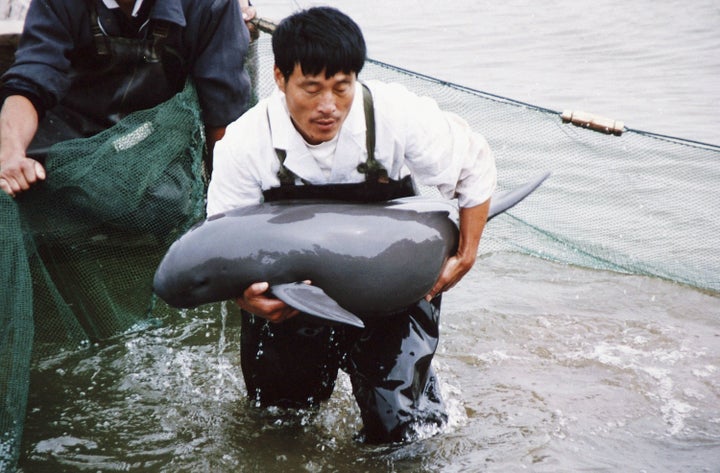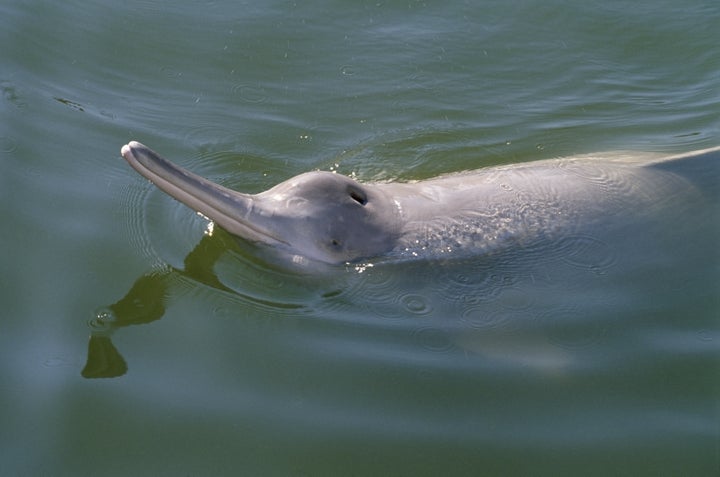
It was a thrilling claim: A decade after the Yangtze river dolphin was declared functionally extinct, a team of amateur conservationists said they spotted the animal near the city of Wuhu in China’s Anhui province this month.
“No other creature could jump out of the Yangtze like that,” Team leader Song Qi, told the Chinese state-sponsored website Sixth Tone of the animal that’s also known as the baiji. “All the eyewitnesses – which include fishermen – felt certain that it was a baiji.”
But there’s no strong evidence to support the unconfirmed baiji sighting, National Geographic’s Michael Greshko notes. Song told Sixth Tone that his team wasn’t able to capture a clear photograph of the creature or any other “conclusive” proof. And Song, who works in the publishing industry, is not an expert on the animal.

The baiji, a small, nearly blind white dolphin, was declared functionally extinct in 2006 after a team of scientists failed to find the animal during a six-week search of the Yangtze river. The dolphin, which had existed for 20 million years, had been endemic to the water body. Its extinction was blamed on overfishing, pollution, ship collisions and other human-driven causes.
Samuel Turvey, a conservation biologist who had been part of the 2006 expedition, told the Guardian this week that he was “skeptical” of the baiji sighting claim.
“Extreme claims for the possible survival of probably extinct species require robust proof, and while I would deeply love there to be strong evidence that the baiji is not extinct, this isn’t it,” Turvey said.
Over the past decade, there have been several uncorroborated sightings of the Yangtze river dolphin. One particularly exciting incident in 2007 turned out to involve a Yangtze finless porpoise, a close cousin of the extinct mammal and one of the world’s most critically endangered species.
Turvey told the Guardian that instead of chasing “the ghosts of baiji,” the world should instead turn its focus on the finless porpoise. “This animal needs urgent media interest and conservation attention in order to combat its total population collapse, while there is still time to do something about it,” he said.
Environmental degradation, overfishing and ship movement are a major threat to the finless porpoise. The World Wildlife Fund said in 2015 that the animal, whose numbers are falling by over 13 percent per year, could become extinct in the next five to 10 years.
At last count, there were about 1,000 finless porpoise left in the wild.

Freshwater dolphins and porpoises are “amongst the most endangered of all cetaceans,” according to the WWF.
There are only six of these freshwater animals left on the planet. Four of them — the finless porpoise, the Irrawaddy dolphin, Indus river dolphin and Ganges river dolphin — found in Asian waters. The International Union for Conservation of Nature lists all four of them as endangered.
“Urgent action is needed to prevent these charismatic animals, about which we still know very little, from becoming extinct,” the WWF said.
Managing human activities in and along rivers, such as promoting sustainable fishing and mitigating pollution, are critical to ensuring the animals’ continued survival. Relocation to protected sanctuaries may also be necessary to conserve some populations.
The Chinese government announced plansIn 2015 to move eight finless porpoises to a reserve far from humans.
“The environment of the Yangtze River is not going to be problem-free overnight, so to ensure the finless porpoise survives, we need to look for the best places for this ancient animal to live, where there are fewer harmful human activities for them to cope with,” Professor Ding Wang, a conservation biologist involved in the translocation, told WWF last year.
